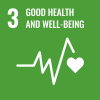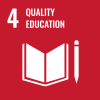Dire Dawa, 10 July 2023 – Sixteen-year-old Abel Ahmed* has never been to school. Originally from Dera, Oromia Regional State, North Shoa Zone in Ethiopia, his family could not afford to send him to school. Instead, he was supporting his family's small-scale farming on their piece of land where they planted sorghum.
“My family has problems with money. I had a plan to go to school but I could not,” he explains.
One month ago, he left home with his peers and friends to look for work, having heard of stories from family members who managed to succeed in finding work in Yemen. A study by the International Organization for Migration (IOM) reveals that children from Habru, Dire Dawa, Bedeno and Sigmo parts of Oromia in Ethiopia reported having been subjected to forms of child labour, including hazardous work in farms in Yemen.
“I wanted to do any work; I heard in Yemen, if you work, there’s a lot of payment.”
After five days on the road, he reached the border of Djibouti where he managed to get to Dewele using a vehicle facilitated by smugglers. From there he crossed to Djibouti on foot. For roughly USD 370 (20,000 Ethiopian Birr), they were granted use of the vehicle and promised a phone to communicate with his family once they got the boat to Yemen from Obock in Djibouti. However, he could not complete the journey and was forced to turn back to Dewele at the Ethiopia-Djibouti border once he crossed.
He has found shelter at the Migration Response Centre (MRC) in Dewele and finally in Dire Dawa in Ethiopia alongside a large group of young, teenage, unaccompanied boys who had embarked on a similar journey.
According to IOM research, there is a common saying on the value of child labour in Ethiopian society: “One starts learning after eating.” The reference suggests that learning without fulfilling the necessity of food is culturally sanctioned, in a context where children are expected to support income-earning activities. He is looking forward to going back home to his family.
“I now want to support my family with traditional farming, keeping livestock, and I want to go back to my sister. My family is happy I am coming back.”
IOM is supporting Abel's return home on voluntary transport and linking him support in the form of non-food items, and temporary shelter. IOM support staff assesses each individual case before referring them on a case-by-case basis to Migrant Response Plan (MRP) partners such as Save The Children to follow up with Family Tracing and Reunification efforts.

Dino* is a 15-year-old migrant boy who decided to take the Eastern Route after his family lost their land to drought. Photo: IOM 2023/Eva Sibanda
Fifteen-year-old Dino Yacob’s* situation is no different from Abel's. The raging drought in his hometown of East Hararge forced his family to seek an alternative source of livelihood. The maize and sorghum planted on their family land had dried up, while some of the cattle and goat they were rearing struggled to find pasture and water and eventually died. As the drought continued, his family sold their remaining livestock for food, saving some for transport to the Gulf States.
“Drought forced us to leave our home. Once all the food was finished, all we had left was dry land,” he shares.
Dino travelled with his six other siblings while their mother and father remained behind in Dewele. It took him seven days to get to Djibouti, from East Hararge. In Dewele, they crossed the border on foot, hiding from checkpoints along the way.
“I feel like I am a teenager, not yet a man (old enough to work).”
At young ages, child migrants often find themselves in situations where they have to be self-reliant and must take up different jobs, exposing them to other forms of human rights violations, such as child labour exploitation and being subjected to forced and unpaid labour.
“Once we reached Djibouti, we were desperate, so I started to beg on the streets,” he recalls.
As he was begging on the street, he met a man who asked him if he was interested in work and offered him a brush and polish to work as a shoeshine, and he started working.
“I worked for two months as a shoeshine in Djibouti City, earning roughly 17 to 28 cents. I collected some money from this work and purchased some clothes for my family.”
Dino recently returned to Ethiopia; the family was split up as his father remained at the Dewele MRC close to the Djibouti-Ethiopia border, and he received IOM-supported transport to the Dire Dawa MRC with his mother and siblings. Now that he is back home in Ethiopia, he will be going home to his host village where MRP partner World Food Programme supports the drought-affected areas with food assistance.
He wants to restart education once he is home. “I went to school before, and I have to resume.”
*Names have been changed to protect identities
The Eastern Route encompasses movements of people travelling from Ethiopia through Djibouti or Somalia and from Somalia travelling across the Red Sea/Gulf of Aden to the Kingdom of Saudi Arabia and other Gulf States via Yemen. The Regional Migrant Response Plan (MRP) for the Horn of Africa and Yemen is a migrant-focused humanitarian and development response strategy for vulnerable migrants from the Horn of Africa, specifically Somalia, Djibouti and Ethiopia, moving to and from Yemen.
Written by Eva Noma Sibanda, Communications Officer (MRP), IOM Regional Office for East and Horn of Africa.



